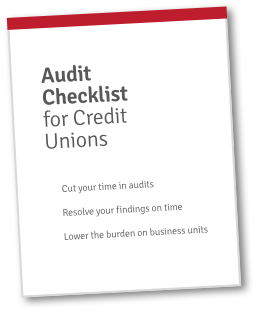This blog is based on part of an article I wrote for The Audit Report, the official publication of the Association of Credit Union Internal Auditors.
In a previous blog, we discussed why CEOs are key to credit union audit program success. In this follow-up, we’ll dig a bit deeper.
That is, we’ll cover three strategies CEOs can take to support their audit program.
This blog expands on the CEO Audit Attitude Pyramid—and each point outlined in it:
Three CEO Responsibilities in Audits
When done right, the relationship between the CEO and chief auditor provides an environment where the CEO can aggressively pursue new growth initiatives and programs without constantly worrying about what could go wrong. When done right, the team works together to produce incredible value for the credit union and its members.
But what are the key ingredients to a functioning CEO–chief auditor relationship? I spoke with several industry veterans about how to make it successful and valuable.
1. Attitude
“Attitude is everything.” That's how Barry Lynch, former NCUA Examiner and current CEO of Waypoint Advisory Services put it. Cultural attitudes are top-down. If the CEO thinks that auditors are the enemy—that they're just a necessary box to be checked—then everyone in the organization down to the teller line will feel the same.
But if the CEO’s attitude embraces auditors as part of the team, the rest of the credit union will act accordingly. When auditors are valued and seen as necessary for protection, then culturally, compliance almost takes care of itself.
So, what can leaders do to ensure their attitudes foster the best environment for progress? There are two easy things you can do to start:
First, you should genuinely believe that your audit team is a valuable part of your credit union's operation. If for some reason you don't believe that, then at least pretend that you do. The rest of your organization is watching, and it matters.
Second, you should exhibit confidence and comfort that the audit process helps your credit union improve—even when it produces unpleasant short-term results.
As Barry puts it: “Veteran CEOs with confidence and experience will look at findings and say, ‘I'm so glad you found that so I can deal with it. I need to know where the leaks in the dam are so that I can make sure somebody has their finger in the hole.’”
2. Support
“I have your back.” That’s what the CEO needs to communicate to the chief auditor. The audit operation is part of the CEO’s team, just like lending and branch operations are.
“The CEO–internal audit relationship is critical, especially at credit unions. If that relationship isn't tight, every single thing you try to do as an internal auditor will either get stymied or go unsupported by the organization.” That’s how Olivia Whipple, former credit union audit executive and founder of The Audit Library put it. “If there’s mutual trust between both parties, the audit process is more valuable to the organization, and everyone wins.”
There are two easy ways for CEOs to show support for the audit team:
First, when it comes to audit findings, you should support the auditor’s decision. Sometimes audit findings can be inconvenient or embarrassing. Sometimes others in the organization will get upset. But the auditor isn’t trying to cause embarrassment or harm—they’re trying to make the organization better.
That’s the underlying truth, and that’s why it’s important for you to have the auditor’s back when it comes to findings—even when they are problematic. Especially when they are problematic.
The second action you can take is to provide insight to the auditor about what’s going on across the credit union—and provide suggestions on areas to address.
The chief auditor will never understand the breadth or the details of a credit union like the CEO does. Input from you not only provides valuable information that can improve the audit program, it also demonstrates confidence in the audit team and their purpose.
3. Leadership
The final side of the CEO Audit Attitude Pyramid is leadership. Everyone in the credit union—lending, branch ops, IT, and yes, even audit—is on the same team. And that attitude must be real and ubiquitous throughout the organization. Only the CEO can make that happen.
Jill Holak, Internal Audit Manager at DCU, explains it like this:
“It all depends on the tone at the top. Only the CEO can set a culture where everybody understands that internal audit is here to help improve the credit union. We're not here to police the institution, we're here to help and add value so our results are better.”
CEOs can do two specific things to move the needle:
First, make sure that your business unit heads are all on the same page about the value that audit brings—and that you expect them to support audit. Your auditors work with your business units day in and day out, and those interactions have a significant impact on the success of your audit program.
Second, integrate your auditors with your overall risk management, compliance, and monitoring activities. If your entire team is rowing in the same direction, they will be more efficient and effective—and provide more value to the organization and your members.
Next Steps for Credit Union CEOs
CEOs can ensure better performance among audit teams and their entire credit unions by following the steps above.
But if you’d like to take things to the next level, we have a few free resources for you and your audit team. These resources have helped auditors virtually eliminate overdue and unresolved findings. Furthermore, the strategies in our webinar have cut audit administration time by 50%.


 Get FREE Access to the Audit Checklist for Credit Unions!
Get FREE Access to the Audit Checklist for Credit Unions!


